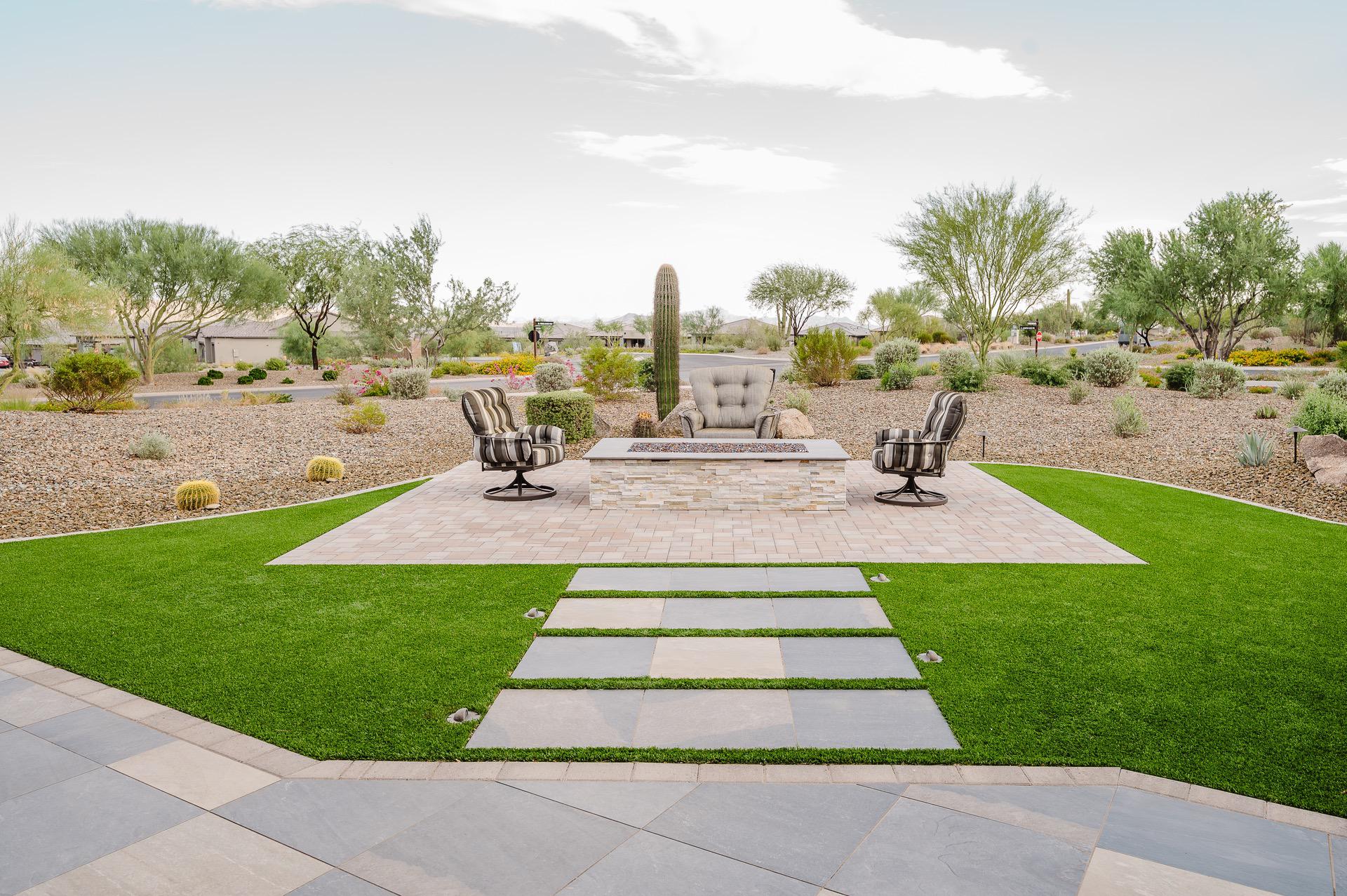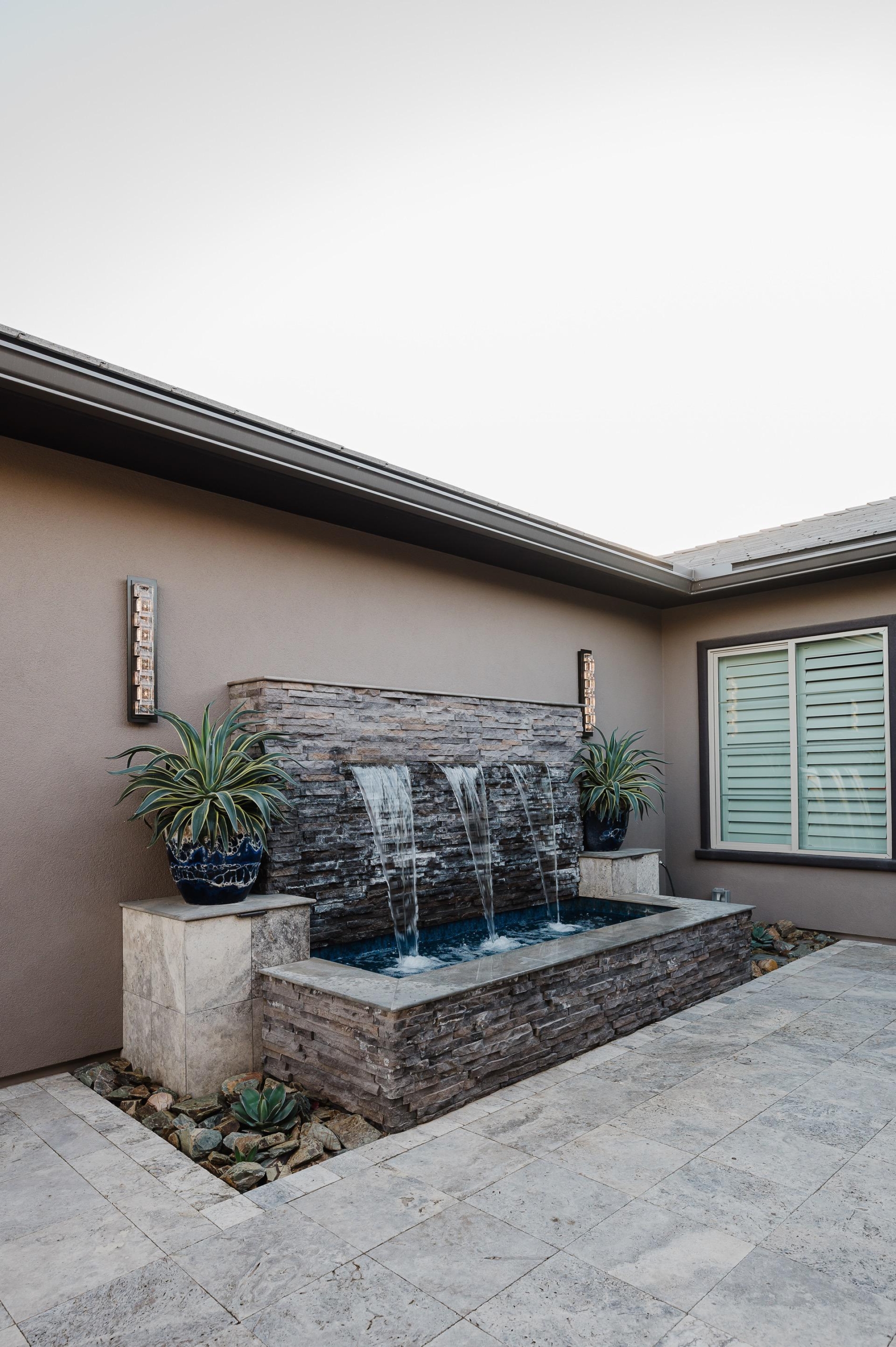FAQs
Planning Your Outdoor Space
Get answers to the most common client questions
Our designers will guide you through the full potential of your outdoor living space. We’ll ask questions to understand your lifestyle, needs, and preferences so we can create a design tailored to you. Things to consider include:
- How you plan to use your space (entertaining, relaxing, seasonal use).
- Views you’d like to highlight or screen for privacy.
- Seating and furniture needs.
- Shade options for year-round comfort.
- Colors and finishes that complement your home.
- Your budget, keeping in mind rising material and labor costs.
- HOA rules and city/county permit requirements.
In Trilogy communities, Semi-Custom options are available before closing. These use a pre-selected list of materials and pre-designed structures, which reduces ordering and permitting time so your project can be installed before your home closes.
Fully Custom designs allow complete freedom but typically require more meetings, longer lead times, and additional permitting. Learn more details here.
Every landscape requires some care, but low maintenance typically means:
- Seasonal weed control and irrigation adjustments.
- Light leaf blowing to clear debris.
- Selective pruning as trees and plants grow.
- Annual cutbacks in spring to keep plants healthy.
- Occasional weed growth during rainy seasons, managed by pulling or post-emergent treatments.
We recommend hiring a qualified landscape maintenance company to protect your investment in trees, cacti, and plants.
- Semi-Custom: About 2 weeks from initial meeting to contract. For pre-close homes, contracts must be finalized before your builder’s deadline.
- Fully Custom: On average, 4 meetings and 2 months due to added complexity. For construction to begin after closing, final contracts must be ready 3 months prior.
Our project managers coordinate directly with home builders and pool partners to schedule installation. Construction is a multi-step process that may include inspections, weather delays, or crew scheduling.
Typical workflow: Utilities → Structures → Pavers/Travertine → Mounding/Boulders → Irrigation → Plants → Grading → Granite → Fencing.
- Expect noise, dust, and multiple crews throughout the process.
- Some days may appear quiet if we are waiting on inspections or next steps.
- At the end, we’ll conduct a punch walk and orientation walk to review the installation, warranties, and irrigation setup.
Yes. We install drip irrigation systems (and pop-up spray irrigation for sod) and will show you how to adjust them seasonally during your orientation walk.
We preset your irrigation timer for your plants’ needs. General guidelines:
- Summer: 6 days per week, mornings only.
- Winter: 3 days per week, same run times.
- Morning watering helps plants absorb water before heat stress and makes irrigation issues easier to spot.
- Spring/Summer (80°F+): Increase watering days.
- Fall/Winter (below 80°F): Reduce watering days.
- We’ll review these seasonal adjustments with you during your orientation walk.
- Pre-close installations: Contact your homebuilder’s warranty department.
- Post-close installations: Reach out directly to your project manager.
Yes! Most plants, trees, and cacti thrive in summer with proper irrigation. We pre-water planting holes and ensure irrigation is running. If a plant fails due to heat stress, it is covered under our 90-day plant/cacti warranty and 1-year tree warranty.
- Shrubs: 2–3 years.
- Trees: First year establishes roots, maturity in 10–15 years depending on type.
- Cacti: Grow slowly, with noticeable growth in spring.
We design with full plant maturity in mind, so your landscape will look better each year.
We encourage clients to finalize all selections before signing the contract. However, changes may be possible depending on:
- Timeline and construction schedule.
- Builder restrictions (pre-close projects often cannot change).
- Permitting and material orders.
If changes are possible, we’ll review costs and impacts with you before moving forward.
Yes. We prepare and submit all HOA forms and city/county permits. If revisions are requested, we’ll review them with you before resubmitting.
If your fence is on a shared property line, both owners must sign a Joint Fence Agreement Form. If not signed by the deadline, the fence defaults to Single-Owner, installed 4 inches inside your property line.
We provide forms and guidance but do not mediate between neighbors. We recommend reaching out to your neighbor early to allow time for discussion and signatures.



